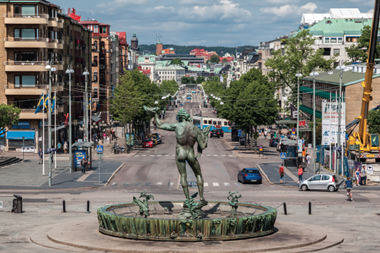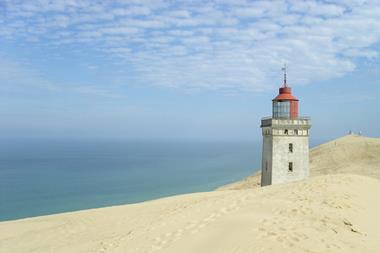Sweden’s biggest pension funds have helped promote sustainable business practices among locally-listed companies through joint efforts on engagement, according to a survey.
A joint venture between 17 of Sweden’s largest investors in cooperation with the Nasdaq Stockholm, called Sustainable Value Creation (Hållbart värdeskapande), was set up in 2009 and has had a significant impact on Swedish publicly-quoted companies’ sustainability work, the survey said.
The joint venture includes the four main buffer funds (AP1, AP2, AP3, AP4) as well as AMF, Alecta, Folksam, and Länsförsäkringar.
Sustainable Value Creation’s third survey of companies confirmed that the work had resulted in more than 85% of companies having processes to identify opportunities as well as risks related to sustainability. This was an increase of around five percentage points since 2009.
Some 10% of firms had linked sustainability goals to remuneration or bonuses for management, the poll showed.
However, a quarter of companies were revealed to be doing no monitoring of direct suppliers and 30% to 35% said they only carried out basic internal controls.
Nadine Viel Lamare, spokesperson for the investor project, said: “It is cheering to see that more and more companies are working strategically on sustainability questions.”
The results of the latest questionnaire showed that this was even true for many medium-sized companies, she said.
“In the globalised economy that the companies are operating in, however, it is worrying that there is not enough control over suppliers,” she said.
Elsewhere, the pensions business of Swedish insurer Folksam doulbed its investment returns last year compared to 2015, to 8.4% from 3.7%.
All asset classes contributed positively to the 2016 return, Folksam said in its annual report, but equities and real estate had given particularly high returns at 15.1% and 21.9% respectively.
Assets under management at Folksam Liv rose to SEK176.2bn (€18.6bn) by the end of December 2016, from SEK164.5bn a year before.
Solvency increased to 165% from 162%.
Premiums fell, though, to SEK9.8bn in 2016 from SEK13.5bn in 2015, which the company put down to a planned continued slowing of one-off premiums following changes it introduced during 2015 to the traditional life insurance business. Different rates of return were applied to new and old capital pools in order to safeguard long-term, stable returns for customers.
KPA Pension, a subsidiary of Folksam, made a 6.7% return on investments last year, according the to report, up from 3.7% in 2015.
Total assets rose to SEK148.4bn at the end of December from SEK132.3bn.
In Norway, public sector pensions provider KLP released its annual results, showing an increase in its return on capital to a value-adjusted 5.8%, up from 4% in 2015.
Total group assets grew to NOK596bn (€67.6bn), up from NOK543bn at the end of 2015.
KLP said high returns on its equity and property investments were the biggest contributors to profit in 2016.
Sverre Thornes, KLP’s group chief executive, said: “With such high returns we are able to give our customers more than NOK4bn of the profit to their premium fund, while at the same time further improving our solvency [so] we can maintain a higher level of premium than the currently low interest rates would suggest.”
KLP said it had seen substantial growth over the past few years in the number of new customers in its public sector occupational pension.
“Even though the situation in the public sector occupational pension market is perceived to be stable, the ongoing municipal reform could impact on KLP’s customer base,” it cautioned, adding that the company was following developments closely.
In the corporate segment, KLP said it was seeing increased interest in the transition from public sector occupational pensions to defined contribution pensions within the corporate market.
“KLP wants to be a good provider to these customers and is pleased that more and more companies are picking KLP for their defined contribution pension schemes,” it said.
Separately, Oslo Pensjonsforsikring (OPF), Norway’s largest municipal pension fund, reported a rise in investment returns to 5.3% for 2016.
Infrastructure produced the highest return out of all asset classes last year, generating 12.5%, with the whole real assets portfolio producing 8.3% in returns. Real estate on its own made an 8% return in 2016.
Real assets made up 22.8% of OPF’s collective portfolio at the end of December.
Fixed income, which accounts for 51.5% of the collective portfolio, ended the year with a 3.4% return, and equities – which have a 25.6% weighting in the collective portfolio – made 6.5% for the fund
The company’s group profit fell to NOK732m (€83m) last year from NOK1.19bn in 2015. Assets under management climbed to NOK83.9bn at the end of December from NOK79.6bn the year before.
OPF provides pensions for public sector employees in Norway’s capital city.









No comments yet